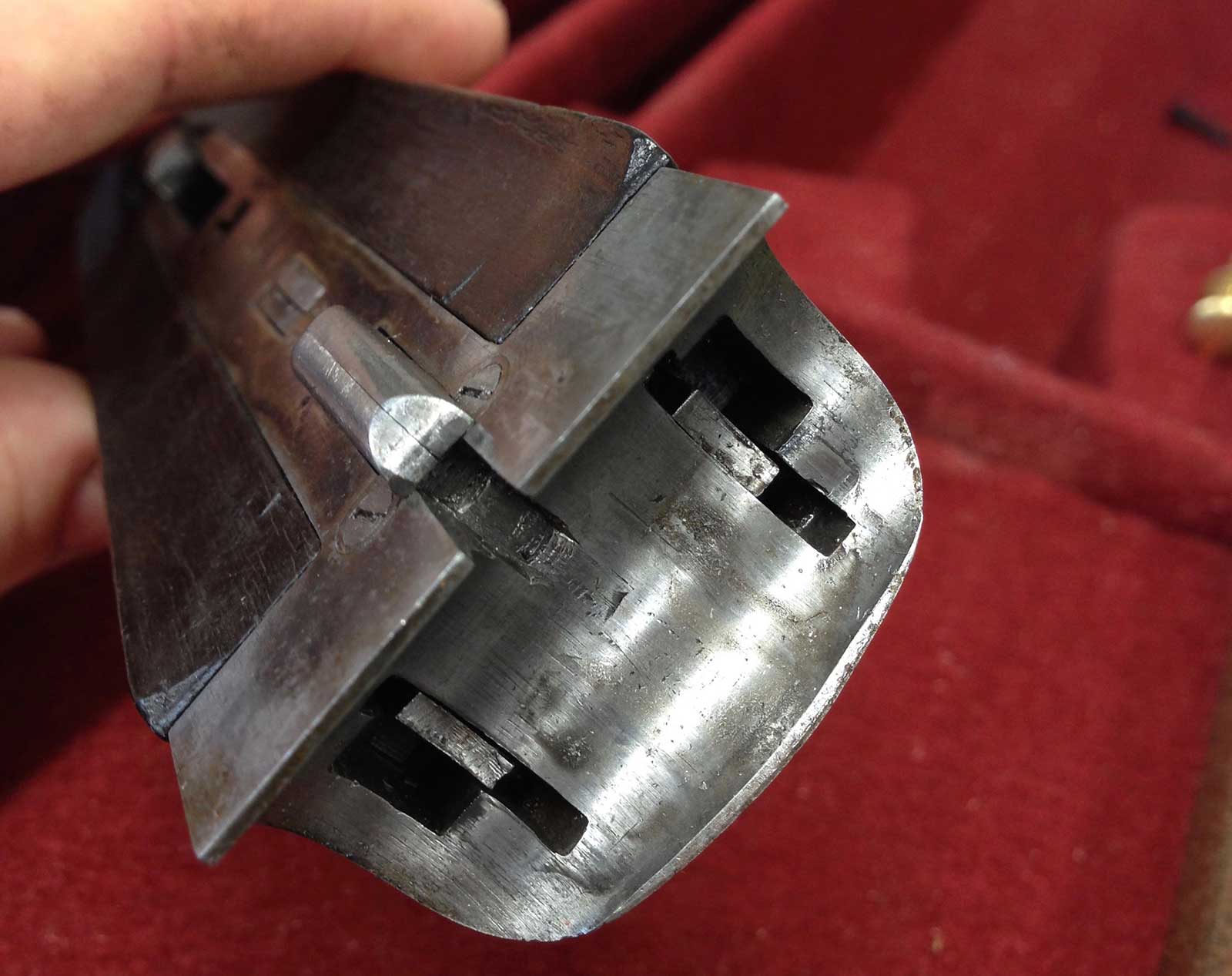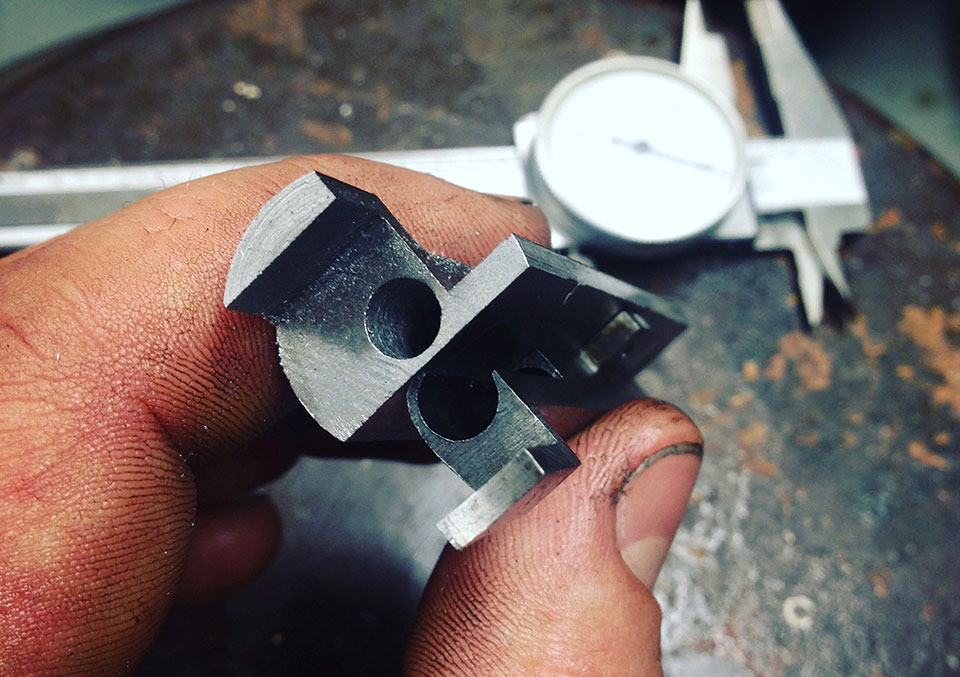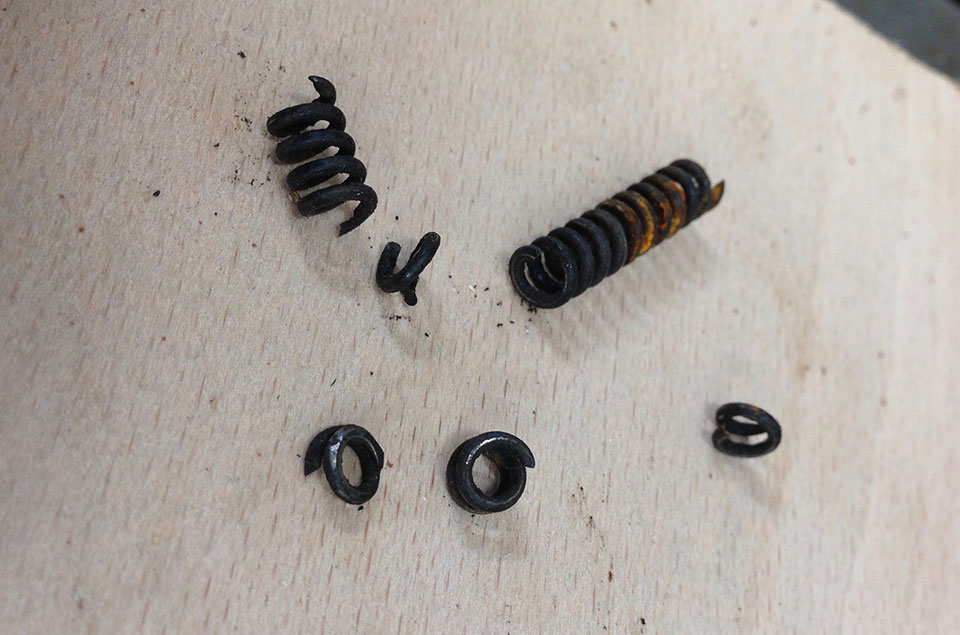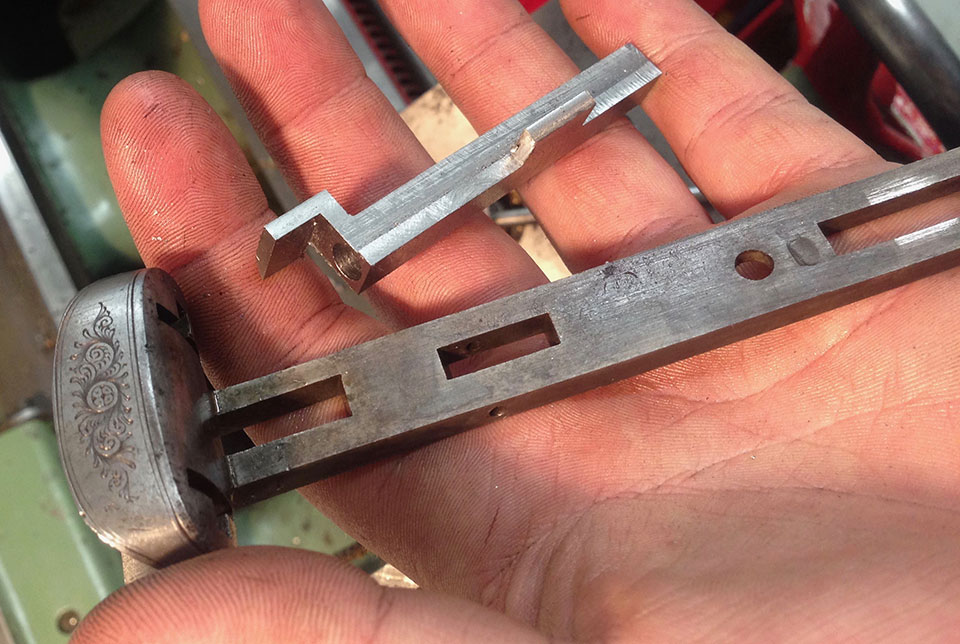You never know what will come through the workshop door, and in the space of a few weeks I have seen three faulty Baker ejector systems. However, don’t judge them too harshly; it is pretty rare for a gun in perfect working order to find its way to the workshop.
A little maintenance over the years would have prevented most of the issues encountered but such has been said by almost every gunsmith and trader who ever wrote an article; and there is still no queue for servicing at the end of the season, alas.
Learning my trade I was once told by someone with nearly a lifetime’s experience when discussing Baker ejectors; “they never worked that well anyway”, I bit my lip and said little because frankly I just don’t buy it.
The Baker ejector system is one of the more common ejector systems on vintage guns; examples of the system can be found from high priced side locks to mid-range box locks. The Baker ejector does have limitations, the mechanism is a little more complex than the Southgate system and the coil springs don’t eject as positively as V Springs.
With that said let’s assume all guns fitted with the system left the factory ejecting positively and well-timed. It is only neglect and wear and, dare I say, poor workmanship which results in malfunction.
Let’s take a look at some of the problems that troubled my clients a few weeks ago, and go through a few basic checks; all guns were returned to their former Baker ejecting glory.
If you managed to follow the explanation, inthe caption, well done! If you didn’t follow, then that’s precisely why the system falls out of favour; there are a lot of moving parts, and quite a lot to go wrong. As with all mechanical systems, maintenance is key, spraying oil all over everything quite often does more harm than good. A proper service will strip a gun down to its individual components clean, polish and reassemble with the right lubrication in the right places. A key part of this process is visually inspecting for damage and wear.
The gun presented was ejecting perfectly on each barrel. However, when both barrels were fired, and required to eject simultaneously, we had sluggish ejection, with empty cases barely toppling over the breach face. It was almost unbelievable, as individually the shells were ejecting a good five feet.
One the face of it the problem simply doesn’t make sense, two perfectly functioning ejectors which refuse to function together. The ejector mechanism for each barrel is completely separate, so the only thing to do is look at where the two mechanisms come in close contact of each other. The two kickers run side by side up and down a slot in the for end iron where the ejector mechanism its self is at its closest. A bur or bend here could make the ejector kickers tight in this slot and result in the poor ejecting phenomena. Testing of these components in the slot first without the spring and then with the spring, then inspecting for flatness on the two bearing surfaces, revealed nothing.
Moving forward, I turned my attention to the extractors, operating these with the tip of a turn screw I found that individually each extractor moved freely, but together they were binding. It was clear that the extractor rods had bent over time or mishandling.
I removed them to address the issue, only to find that they were flat, true and straight in every regard, but why so stiff to move? Well the culprit was found, both extractors ran in a tiny guide slot little less than 1/8” of an inch wide in the top rib extension (in this case a third bite) at some point the gun had been dropped or roughly handled, peening a tiny amount of metal over in that slot; making it too narrow for both ejectors to move up and down the guide slot freely. Sometimes complex mechanisms fail and we expect a complex solution will be required - but start with the basics before making adjustments!
Common Failings.
The first thing to look for with a Baker system ejecting poorly is the springs, the coil springs in your baker ejector are probably approaching their centenary year, and can be found in bits and pieces; the broken remains of the spring getting smaller and smaller and not providing adequate ejection force. Replace the springs and test; a spring too long will not allow the ejector kicker (Marked “D” in fig 35) to move back far enough to lock into the bent (Marked E) and too short a spring may give inadequate ejection force. and/or break. This rod guides the kicker in its table up and down the ejector box and damage here can lead to annoying intermittent faults.
I’ve had a few Baker systems with timing faults: a fault that’s almost inherent to the system. Studying fig 35 we can see the mating surfaces of parts ‘C’ and ‘F’ are exceptionally small. However, figure 35 only tells part of the story as ‘F’ cams off the hammer, meaning as the gun opens, ‘F’ will move back as the hammer is cocked, with the falling of the barrels, making the bearing surface between ‘C’ and ‘F’ at its smallest when the pressure on the surfaces is at its greatest. This being the case, it is all too easy for damage and wear to contribute to timing faults.
Accidental damage is sure to occur if a forend is forcibly installed with tripped ejectors on such small parts. Timing for the Baker system should not be achieved by stoning parts ‘C’ or ‘F’, as the contact area is so small. Adjusting the bents and angles at ‘E’ gives far greater scope for adjustment and timing can be easily be fixed; even if assembling and disassembling the for- end can become rather tedious
The weakest point of the mechanism is between parts ‘C’ and ‘F’. Part ‘C’ being a protrusion of the ejector box. Damage here requires a new ejector box to be made or fitted. I was unfortunate enough to not be able to source parts for this system from any of the usual suspects at the time the job was in the workshop; though it has since been brought to my attention that spares are available which may save a few pounds.
Machining a new ejector box is a more of a fiddly operation than it is a complex one. Like most machine work, good planning saves a lot of difficulty. Holding the part gets harder and harder as the ejector box gets smaller and smaller. Every measurement is critical and the unfinished blank from the milling machine requires much hand filing in order to fit and regulate the box. A file stroke too many at ‘C’ ruins the part.
The Baker system is fitted to many vintage guns, like any mechanical device it has its weaknesses and faults, but hopefully as we have discovered, the mechanism is capable of delivering positive and reliable ejection.
This article really only scratches the surface of some of the issues that might crop up with Baker ejectors, but they are not a lost cause and can be made reliable , if understood properly.
Published by Vintage Guns Ltd on



